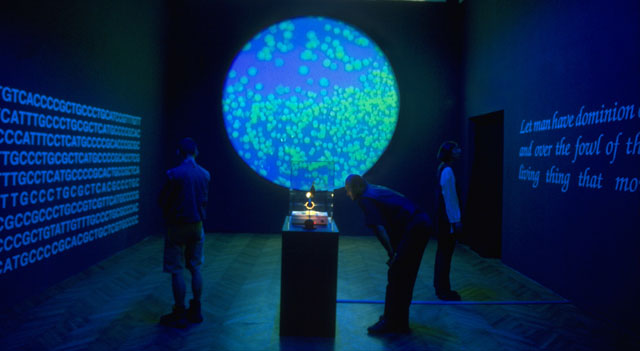The choice between art and science for me has always been simple. I chose art. This choice has always been necessary for a child to make because it has been taught from a young age that one cannot be well versed in both science and art. I never knew you could actually be good at both. My right side of my brain, or the "artistic side" is definitely stronger, and art has always come much easier to me than science. Easy led me to believe that art was the right choice. I also have had amazing art teachers and mediocre science ones, leading me to believe art is better than science. I think educators play a huge role in which side one takes and the fact that one has to choose a side at all. UCLA is different than all of the other schools I have attended in that it allows you to experience both art and science. You can do a major in science and a minor in art, or vice versa. You can also double major.

Charles Percy Snow came up with the idea of the separation of art and science. He was a novelist, worked for the government and was a scientist. At an annual seminar in Cambridge he identified two cultures: science and literacy. He wrote eleven books and the essay "The Two Cultures and the Scientific Revolution." In the essay he talked about the separation of art and science, which leads to ignorance. He also describes how this leads to the wealth gap in society: the disparity between the rich and the poor. He said that, "everyone should have literacy and science."

Victoria Vesna is a media artist and a professor at UCLA. She wrote the essay, "Toward a Third Culture: Being in Between." She talks about how artists who work with computers can be inspired by how many amazing scientific innovations there are in the world. She wrote, "Scientists can relate to and understand
[artists'] work easily primarily because we use the same tools - computers." Computers are an important tool to bridge the gap between art and science. Computers come in handy in both fields and allows scientists and artists to implement each others work into their own.
http://newmedia.umaine.edu/images/Jon%20Ippolito/kac_genesis_a_vga@m.jpg
Sources:
Snow, C. P. The Two Cultures and the Scientific Revolution. N.p.: n.p., n.d. Print.
The Editors of Encyclopædia Britannica. "C.P. Snow." Encyclopedia Britannica Online. Encyclopedia Britannica, n.d. Web. 03 Apr. 2016.
Vesna, Victoria. Toward a Third Culture: Being in Between. N.p.: MIT, n.d. Print.
"UCLA Design Media Arts / Faculty." UCLA Design Media Arts Full. N.p., n.d. Web. 03 Apr. 2016.
http://www.scientificamerican.com/article/an-update-on-cp-snows-two-cultures/
Photo Sources:
https://coopcatalyst.files.wordpress.com/2012/07/artscience.jpg
https://s-media-cache-ak0.pinimg.com/originals/42/c1/ee/42c1eeb2fba34e4222fc01f65a803527.jpg
http://graphics8.nytimes.com/images/2008/05/26/science/27angi02_650.jpg
http://newmedia.umaine.edu/images/Jon%20Ippolito/kac_genesis_a_vga@m.jpg




I had a similar experience to Alexa when I was younger. The school I attended from Kindergarten until 5th grade actually seemed to promote and excel at art rather than science. I always seemed to be painting, sculpting, learning new instruments, and taking shop classes. It became clear that math and science were tough subjects for me because they were not taught as well in detail, so I needed outside tutors. Your teachers definitely play a large roll in your performance in certain subjects. When I was younger, no one would have expected me to ever excel at any science or math course, but in middle school this all seemed to change. This is where my story diverges from Alexa's. Painting started to feel like a lot of work for me and I never felt like I created anything meaningful or beautiful. Math and science became my favorite subjects and my grades reflected that. In high school I took glass blowing and wheel throwing, both of which (to my surprise) I did really well in and enjoyed a lot. So, even though painting and sketching still seem to give me more trouble, sculpting is something I enjoy and am good at. Now, I am a statistics major at UCLA and math and science remain to be my favorite subjects, but I still love to sculpt objects. I feel that I have changed a lot since my younger self. I would definitely say that I am more "left-brained," especially comparing to my younger self. I see myself looking for a career in math or science but hope to have a few hobbies in the art world!
ReplyDelete